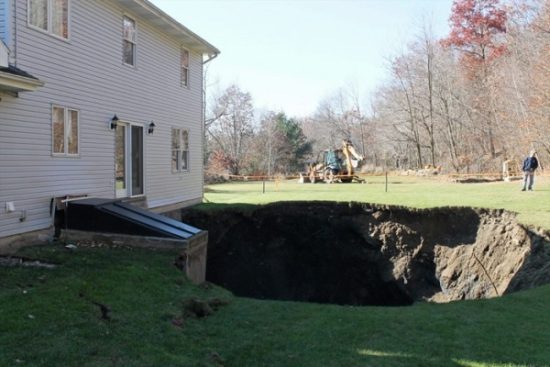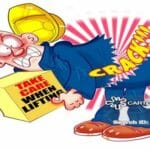- Course No E – 1482
- PDH Units 1.00
No data found for Custom Course Number
No data found for Custom Course Units
- Course No E – 1482
- PDH Units 1.00
Intended Audience: city, county, and military-base engineers concerned with land subsidence problems caused by the collapse of underground mines
PDH UNITS: 1
Large regions of Illinois, Indiana, Kentucky, Ohio, Pennsylvania, and West Virginia are underlain with coal deposits that lie so far below the surface that they can be extracted only through underground (rather than surface) mining. Many of these mines were dug well over one hundred years ago in areas that were uninhabited or sparsely settled at the time. Today these areas are home to residential subdivisions and retail centers, some of which now sit above abandoned mines. In these mines, the coal pillars and timbers that originally supported the mine roof collapse from age and water damage, and as a result the roof comes down, the earth material overlying the coal sinks, and the surface of the land above the mine subsides. Any structure lying on the surface is liable to damage from the subsidence. This course discusses the phenomenon of mine subsidence and the problems that it may cause to residential structures. For example, buildings may experience cracking in foundations, walls, and ceilings. The ground around buildings may crack and move down. Doors and windows may stick, jam, or break. Parts of buildings may tilt, and doors swing open or closed. Water lines may break, resulting in dirty tap water, loss of water pressure, and soaked ground. Gas and sewer lines may leak. The course is based on specific conditions in Illinois, but many of these same conditions exist in the other coal-mining states mentioned above. The geologic setting, mining methods, types of subsidence, effects of subsidence, and possible repair of subsidence-damaged residences are all described. Because damage from mine subsidence is sometimes confused with damage from other causes such as expansive soils, the course describes how the different source of damage may be distinguished. This course is based on Circular 569 of the Illinois State Geological Survey, “Mine Subsidence in Illinois: Facts for Homeowners,” by Robert A. Bauer, 2006.
Learning Objectives
At the successful conclusion of this course, you’ll be able to identify and discuss:- Learning signs and underlying causes of subsidence
- Knowing about high-extraction mining methods with planned subsidence and low-extraction mining methods such as room-and-pillar, with unplanned subsidence
- Understanding the dangers of abandoned mines
- Understanding pit and sag subsidence
- Knowing methods of repairing damaged houses built on slabs, with crawl spaces, or with basements
- Learning the effects on utilities and drainage
- Distinguishing between damage caused by mine subsidence from damage caused by soil expansion, freezing and thawing, piping, or brick expansion with temperature change
Once completed, your order and certificate of completion will be available in your profile when you’re logged in to the site.










